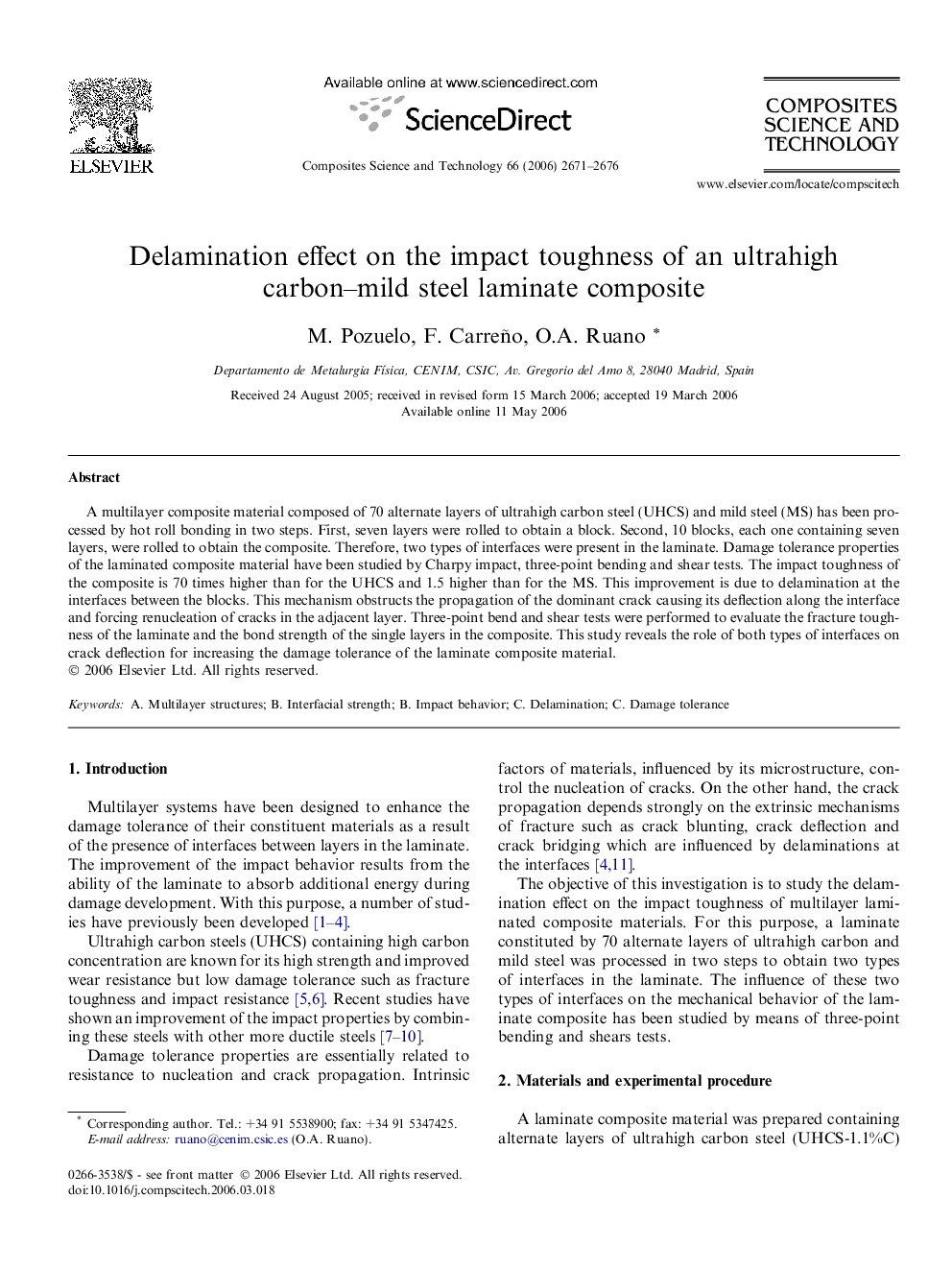| Article ID | Journal | Published Year | Pages | File Type |
|---|---|---|---|---|
| 822689 | Composites Science and Technology | 2006 | 6 Pages |
A multilayer composite material composed of 70 alternate layers of ultrahigh carbon steel (UHCS) and mild steel (MS) has been processed by hot roll bonding in two steps. First, seven layers were rolled to obtain a block. Second, 10 blocks, each one containing seven layers, were rolled to obtain the composite. Therefore, two types of interfaces were present in the laminate. Damage tolerance properties of the laminated composite material have been studied by Charpy impact, three-point bending and shear tests. The impact toughness of the composite is 70 times higher than for the UHCS and 1.5 higher than for the MS. This improvement is due to delamination at the interfaces between the blocks. This mechanism obstructs the propagation of the dominant crack causing its deflection along the interface and forcing renucleation of cracks in the adjacent layer. Three-point bend and shear tests were performed to evaluate the fracture toughness of the laminate and the bond strength of the single layers in the composite. This study reveals the role of both types of interfaces on crack deflection for increasing the damage tolerance of the laminate composite material.
